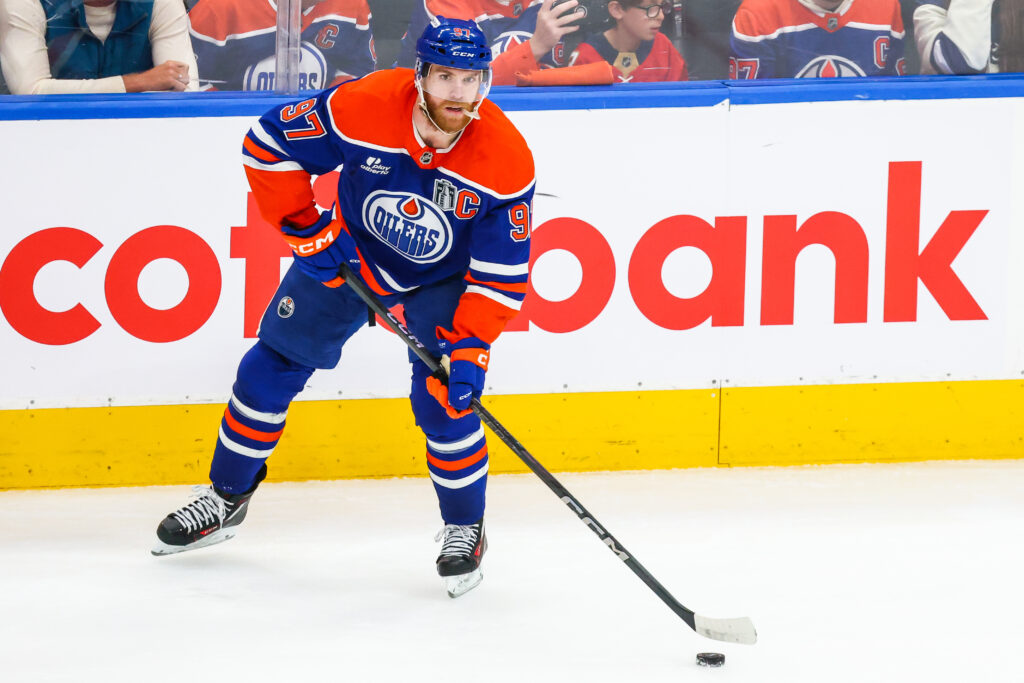At the age of 36, many accomplished players typically experience the unwelcome effects of aging. Their agility diminishes, the pace of the game becomes challenging, and their role on the team often shifts to supporting the emerging young and elite talent. However, Sidney Crosby stands out as an exception.
Despite being 36 years old, Crosby is making a compelling case to be part of the Hart Trophy conversation this year, given his pivotal role in carrying the Pittsburgh Penguins. Despite his age, the team dynamics, and the accumulated wear and tear throughout his career, conventional expectations would suggest Crosby should be slowing down. Surprisingly, that’s not the case.
Instead, Crosby is defying the odds and improving as he ages, poised to have one of his most productive offensive seasons in a considerable time span. This achievement appears improbable, considering the NHL’s increasing speed, skill, and youthfulness. Yet, a closer examination of the game played by this generation’s greatest player reveals why Sidney Crosby seems impervious to the effects of Father Time.
How This NHL Player Is Defying Father Time
It’s no secret that the NHL has become a young man’s game The importance of speed and transition offense cannot be overstated; falling behind in these aspects can prove costly for a team. However, Sidney Crosby defies this trend. At 36, age often translates to a decline in footspeed, making it challenging to outpace opponents off the rush, a skill that younger players like Nathan MacKinnon and Connor McDavid often leverage.
Crosby, on the other hand, employs a distinctive approach. Despite lacking the sheer speed of some of his counterparts, he is currently on track to achieve a remarkable milestone – scoring 52 goals and experiencing his most prolific goal-scoring season to date. While Crosby has consistently delivered outstanding seasons throughout his career, this particular season’s pace could surpass his previous single-season goal record of 51, established in the 2009-10 season when he also accumulated 109 points.
His hockey IQ and mental acuity sets Crosby apart in his dominance, attributes that bode well for an aging player. While he possesses the skill to execute highlight-reel goals, his true strength lies in his ability to anticipate the flow of the game. This has always been evident in Crosby’s capacity to both create plays and find the back of the net.
Goalscoring
Commencing with Crosby’s goal-scoring prowess, a facet that has notably progressed this season despite his age, he is trending toward a career-high in goals, a remarkable feat considering he operates within one of the league’s weakest powerplay units. The majority of his goals stem from Crosby’s astute positioning and precise touch in the proximity of the net, with an impressive 72% of his goals occurring within a ten-foot radius of the net.
Typically, players who accumulate a significant number of goals around the net position themselves directly in front of the goalie, disrupting their vision and utilizing their bodies to create opportunities. However, Crosby employs a slightly different strategy. He dominates the areas beside either post around the net. This approach, ingrained since his entry into the league, takes advantage of goalies squaring up to the shooter. Standing alongside the goalie allows Crosby to exploit angles for deft puck deflections.
Crosby continues to employ this effective maneuver to outsmart goalies. Even when the opportunity isn’t a clear-cut chance for a slap pass, Crosby consistently positions himself adeptly beside the post to act as a cleanup player. Notably, he doesn’t shy away from utilizing his entire body to execute plays around the net.
Despite the accelerating pace of the game, Crosby recognizes that the ultimate destination remains constant – around the net. His unparalleled understanding of this key area is a testament to why, at the age of 36, he remains on track to surpass the 50-goal mark.
Off The Rush
When the game becomes exponentially faster, Crosby takes an interesting approach to scoring off the rush, slowing the game down to his pace and finding an open teammate. Even when he was younger and had the ability to do it all himself, Crosby still frequently opted to wait for the play to develop and then make a pass.
He’s still doing the exact same thing today. When other players may use their speed and attack the net for a shot, Crosby leverages his teammate’s speed and lets them do the leg work while he feeds them a gorgeous pass.
As he has aged, there has been a concerted effort by the Penguins and Crosby himself to incorporate faster players who can effectively enter the zone with the puck and outpace defenders. However, Crosby’s astute awareness enables him to drive the play even when he doesn’t have possession.
Illustrating Crosby’s exceptional performance this season is the statistic of expected goals per 60 from his line. The line comprising Jake Guentzel, Crosby, and Bryan Rust is scoring at a rate of 4.14 goals per 60, ranking only behind the line of Zach Hyman, Connor McDavid, and Ryan Nugent-Hopkins with 4.87 goals per 60.
At 36, Crosby remains the driving force behind one of the most efficient lines in the NHL. Observing him in the offensive zone, it’s hardly surprising. Crosby’s unparalleled puck protection and edgework continue to be unmatched in the league, a consistent hallmark of his game throughout his illustrious career.
His wide frame, combined with his low center of gravity, makes him nearly impossible to touch below the goal line and along the wall. Over the years, fans have witnessed Crosby employing his exceptional puck protection and edgework to create space along the wall, culminating in precise seam passes to shooters. A telling statistic, shot assists per 60, which tracks instances where an immediate pass leads to a shot on goal, highlights Crosby’s prowess. In the current season at 5v5, he leads the NHL in this category with an impressive 17.03, a testament to his ability to thread the needle through seams.
His embodiment of a first-line grinder adds to the enjoyment of watching Crosby. Possessing the skills of a superstar coupled with the work ethic reminiscent of a third-liner fighting to secure a spot in the lineup, Crosby presents a unique and captivating blend.
The Penguins execute a 1-2-2 forecheck strategy, requiring the first forward to engage physically, separating the puck from defensemen to allow the second forward to enter and gain possession. While some superstars may not excel as the first forward in this scheme due to their demand for calculated physicality, Sidney Crosby sets the gold standard in this regard.
This clip is a perfect example of why Crosby is the gold standard.
Did you know? Sidney Crosby's 15 goals at even strength are tied for second in the NHL this season. pic.twitter.com/6v81gwd5fY
— Pittsburgh Penguins (@penguins) December 22, 2023
Watch how Crosby’s pressure on the Carolina defense forces Brady Skjei to make a quick play up the boards. He is so rushed because he knows Crosby is a player who will finish his check, so Skeji needs to move that puck instantly, which is exactly what the Penguins want. The second forward, in this clip it is Jake Guentzel, seals off the wall perfectly to cause a turnover. Watch how Crosby makes a beeline to the net as soon as there is a turnover. Guentzel passes the puck over Rickard Rakell in the slot and makes an incredible heads-up play, knowing that Crosby is attacking the net.
This is the synergy of skill and knowledge in action. Crosby’s profound understanding of the game and strategic positioning allows him to generate turnovers effortlessly. Despite the game’s exponential increase in speed and skill since Crosby’s entry into the league, few can match his rapid cognitive processing on the ice. Remarkably, his defensive prowess is equally noteworthy. Whether providing low support for his defense or strategically disrupting plays, Crosby exerts influence on both ends of the rink.
Crosby boasts an impressive 59.7% success rate in the faceoff circle this year, significantly enhancing the Penguins’ chances of starting with possession when he’s on the ice. Demonstrating that the best defense is a good offense, Crosby plays a pivotal role in dictating the flow of the game.
Even at 36 years old and amidst a team that’s considered mediocre, Crosby persists in striving to propel the Penguins into the playoffs. Should they secure a playoff berth, a compelling case could be made for Crosby to contend for the Hart Trophy. Considering the serious concussions that marred his prime, the level of productivity he maintains at this age defies the expectations set by Father Time.
In a league where young stars often ascend to the forefront, the reign at the top eventually wanes for everyone. Some, like Mario Lemieux, experience a swift transition, while others, like Joe Thornton, see it happen later. However, for Crosby, that day has not yet arrived, as he continues to stand as one of the premier players in the league at the age of 36.
Main Image: Charles LeClaire-USA TODAY Sports



